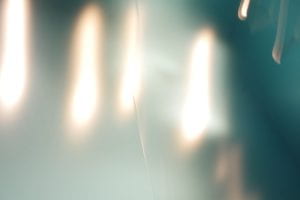SET 2
Ahmed Thabet
He was another one of the contestants at the Minimalist Photography Awards 2022. He is an Egyptian doctor by profession who made an unexpected career change and became a photographer. His exceptional photographs tell stories of artificial structures, glorified by a photographer’s sharp eye.
(more AMAZING Ahmed Thabet’s photographs )

(My favorite picture in Ahmed Thabet’s photographs, one of the series of “Oculus”)
Ahmed Thabet’s “Oculus” particularly inspires me. It was taken in New York City to the beautiful (transportation hub) named the Oculus, designed by the Spanish architect Santiago Calatrava, in a very abstract approach, delving into details more and more, diving into curves, trying to get the best of it. His philosophy regarding his work is to “focus on a preconceived idea in my mind.” He usually puts it into a series of shots with the same architecture. Although working in a series is usually challenging, he considers architecture a beautiful model. He mentioned that getting lucky shots out of a series of shots is hard. He believes an artistic vision can only be fully expressed through a series with different perspectives. He also said, “I do not accept the norm in art, my image should convey emotions and thoughts to the viewers.” This was a very motivational quote to me because I also agree with it and agree that the most boring thing we do in arts is being expected. Thabet also mentioned that he usually uses long exposure monochrome, abstract, minimalism, creative editing, etc., to make his photos look revolutionary.
In set 1, I focused on the lighting and color. However, for set 2, I want to alter my vision and focus less on the lighting and more on the pattern, shades, and textures.
Pictures I took:



Best 3 pictures
I chose these pictures as my final product, and I am pleased with these images. I produced this picture by setting specific places focused. I am trying to remember the type of camera I used, but it was a camera that takes close-up shots; it was tough to handle. After I took a bunch of photos, choosing three of them was extremely hard. I chose those pictures as my final product because it overall seems balanced as the objects all have a horizontal line.
What went well in this photogram was the balance between the textures, patterns, and shadows. Moreover, the monochromatic color scheme made the pictures produce a cold and calm vibe. One challenging part while taking this photo was removing the distracting objects in the background and focusing on specific things. I could have improved these images if I had taken pictures (such as buildings) outside to make the pictures look more abstract because it was more complicated than I thought to find places with specific little patterns in our school. Overall I am pleased with these photos because I like the mood it produces using various techniques.






















































